In a metre bridge , the null point is found at a distance of 33.7 cm from A. If now a resistance of 10Ω is connected in parallel with S, the null point occurs at 51.9 cm. determine the values of R and S.
To solve the problem, we will use the principles of a meter bridge and the concept of parallel resistances.
1. Understanding the Initial Condition:
- The null point is found at a distance of 33.7 cm from point A.
- According to the meter bridge principle, we have:
RS=L1L2
- Here, L1=33.7cm and L2=100−L1=100−33.7=66.3cm.
- Therefore, we can write:
RS=33.766.3(Equation 1)
2. Understanding the Condition with Parallel Resistance:
- When a resistance of 10Ω is connected in parallel with S, the equivalent resistance Seq is given by:
Seq=10⋅S10+S
- The new null point occurs at 51.9 cm. Thus, we have:
RSeq=L3L4
- Here, L3=51.9cm and L4=100−L3=100−51.9=48.1cm.
- Therefore, we can write:
RSeq=51.948.1(Equation 2)
3. Substituting Seq in Equation 2:
- Substitute Seq into Equation 2:
R10⋅S10+S=51.948.1
- Rearranging gives:
R⋅(10+S)=10⋅S⋅51.948.1
4. Finding R in terms of S:
- From Equation 1, we can express R in terms of S:
R=S⋅33.766.3
- Substitute this into the previous equation:
S⋅33.766.3⋅(10+S)=10⋅S⋅51.948.1
5. Simplifying the Equation:
- Cancel S (assuming S≠0):
33.766.3⋅(10+S)=10⋅51.948.1
- Now, solve for S:
33.7⋅(10+S)=10⋅51.948.1⋅66.3
6. Calculating the Values:
- Calculate the right-hand side:
10⋅51.948.1⋅66.3≈21.2⋅66.3
- Now, expand and solve for S:
337+33.7S=21.2⋅66.3
- Rearranging gives:
33.7S=21.2⋅66.3−337
- Finally, calculate S and then substitute back to find R.
Final Values:
After performing the calculations, we find:
- S≈11.23Ω
- Substitute S back into Equation 1 to find R:
R=S⋅33.766.3≈10.8Ω
- The null point is found at a distance of 33.7 cm from point A.
- According to the meter bridge principle, we have:
RS=L1L2
- Here, L1=33.7cm and L2=100−L1=100−33.7=66.3cm.
- Therefore, we can write:
RS=33.766.3(Equation 1)
- When a resistance of 10Ω is connected in parallel with S, the equivalent resistance Seq is given by:
Seq=10⋅S10+S
- The new null point occurs at 51.9 cm. Thus, we have:
RSeq=L3L4
- Here, L3=51.9cm and L4=100−L3=100−51.9=48.1cm.
- Therefore, we can write:
RSeq=51.948.1(Equation 2)
- Substitute Seq into Equation 2:
R10⋅S10+S=51.948.1
- Rearranging gives:
R⋅(10+S)=10⋅S⋅51.948.1
- From Equation 1, we can express R in terms of S:
R=S⋅33.766.3
- Substitute this into the previous equation:
S⋅33.766.3⋅(10+S)=10⋅S⋅51.948.1
- Cancel S (assuming S≠0):
33.766.3⋅(10+S)=10⋅51.948.1
- Now, solve for S:
33.7⋅(10+S)=10⋅51.948.1⋅66.3
- Calculate the right-hand side:
10⋅51.948.1⋅66.3≈21.2⋅66.3
- Now, expand and solve for S:
337+33.7S=21.2⋅66.3
- Rearranging gives:
33.7S=21.2⋅66.3−337
- Finally, calculate S and then substitute back to find R.
After performing the calculations, we find:
- S≈11.23Ω
- Substitute S back into Equation 1 to find R:
R=S⋅33.766.3≈10.8Ω
Topper's Solved these Questions
- CURRENT ELECTRICITYBook:AAKASH SERIESChapter:CURRENT ELECTRICITYExercise:EXERCISE (LONG ANSWER QUESTIONS)
Explore 12 Videos
- CURRENT ELECTRICITYBook:AAKASH SERIESChapter:CURRENT ELECTRICITYExercise:EXERCISE (SHORT ANSWER QUESTIONS)
Explore 12 Videos
- COMMUNICATION SYSTEMS Book:AAKASH SERIESChapter:COMMUNICATION SYSTEMS Exercise:PRACTICE EXERCISE (TV Antenna)
Explore 16 Videos
- CURRENT ELECTRICITYBook:AAKASH SERIESChapter:CURRENT ELECTRICITYExercise:EXERCISE - IA
Explore 2 Videos
Similar Questions
In a meter bridge,
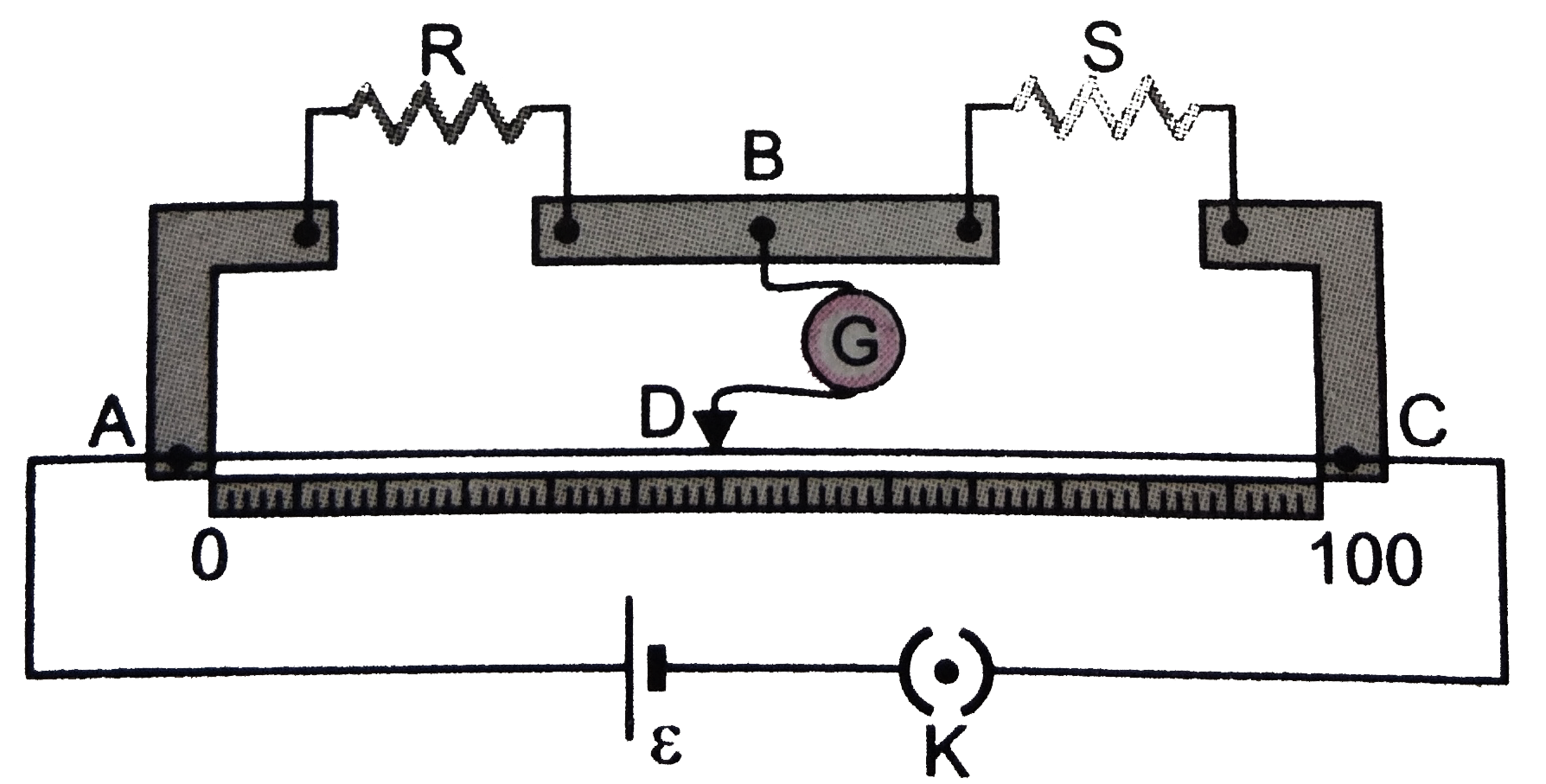
the null points is found at a distance of 33.7 cm from A. If now a resistance of 12Ω is connected in parallel with S, the null point occurs at 51.9 cm. Determine the values of R and S.
View SolutionIn a metre bridge the null point is found at a distance of 35 cm from A. If now a resistance of 10Ω is connected in parallel with S, the null point occurs at 50 cm. Determine the values of R and S.
View SolutionIn a meter bridge, the null point is found at a distance of 40 cm from A. If now a resistance of 12 Ω is connected in parallel with S, the null point occurs at 60 cm from A. Determine the value of R.

View SolutionIn a meter bridge, the null point is found at a distance of 40cm from A. If a resistance of 12Ω in connected in parallel with S the null point occurs at 50.0cm from A Determine the value of R and S
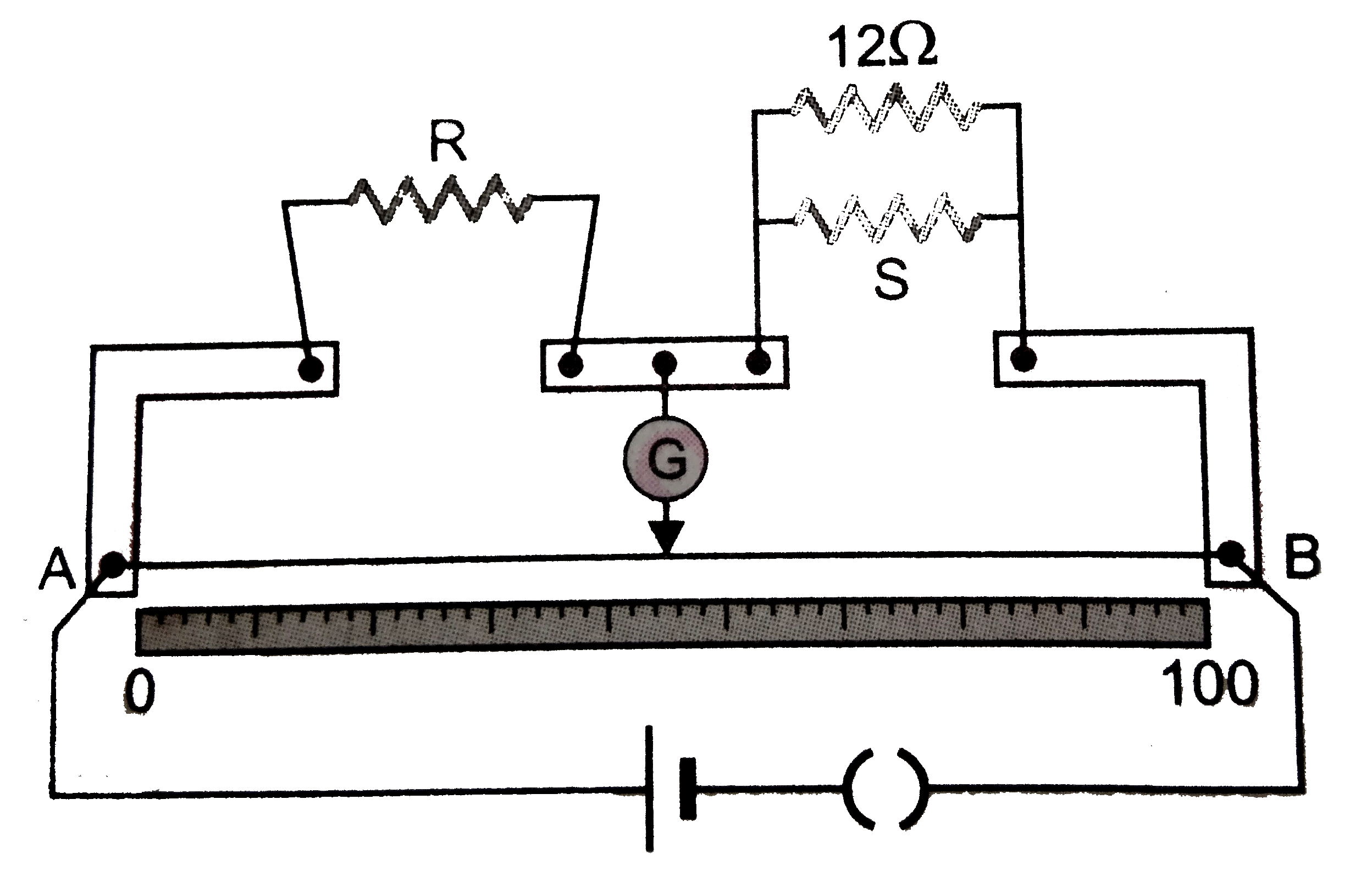
View SolutionIn a meter bridge, the null point is found at a distance of l1cm from A. if now a resistance of X is connected in parallel with S, the null point occurs at l2cm. Obtain a formula for X is terms of l1,l2andS.
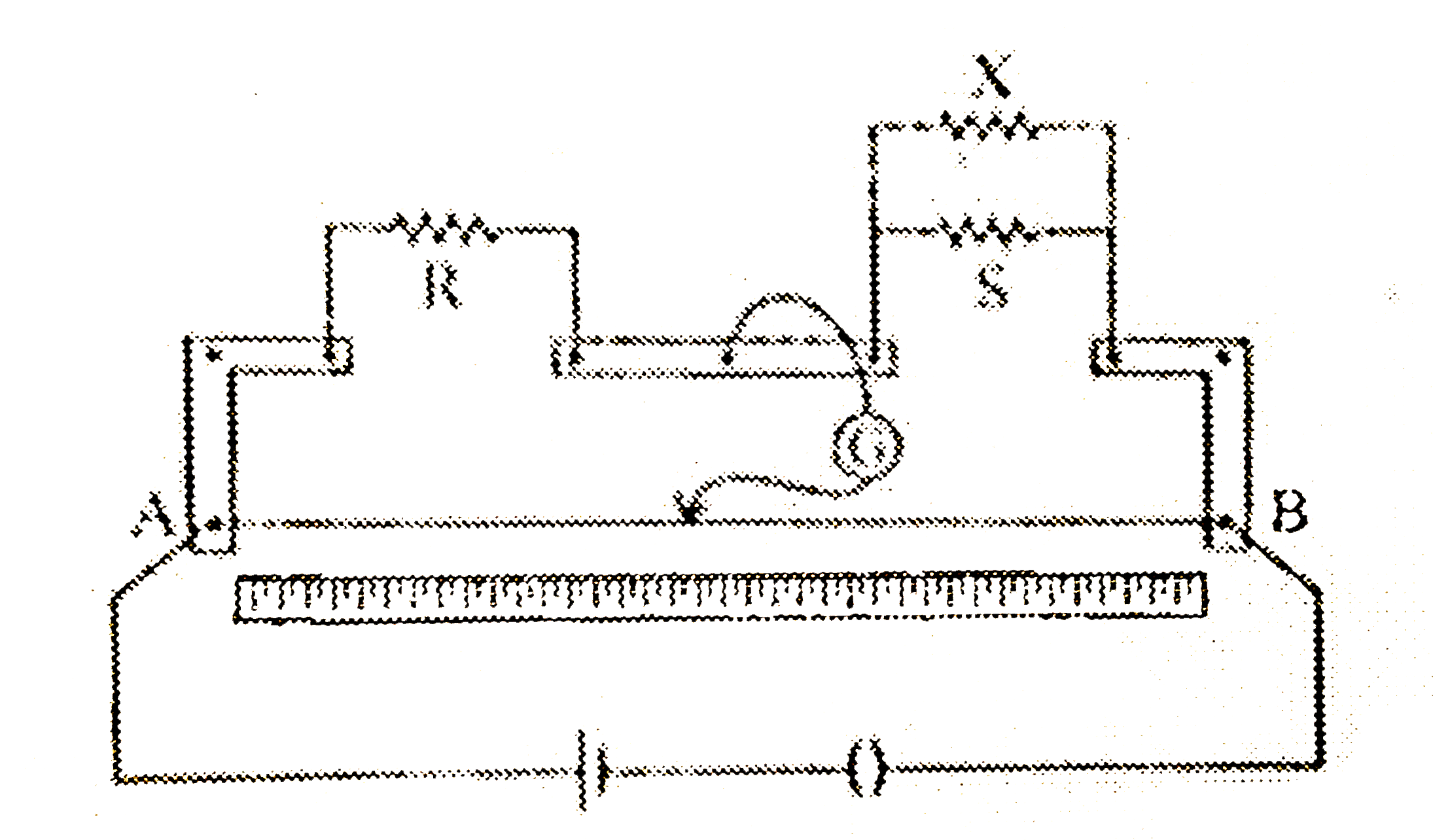
View SolutionCircuit diagram of metre bridge is shown in figure. The null point is found at a distance of 40cm from A. it now a resistance of 12Ω is connected in parallel with S, the null point occurs at 64cm.
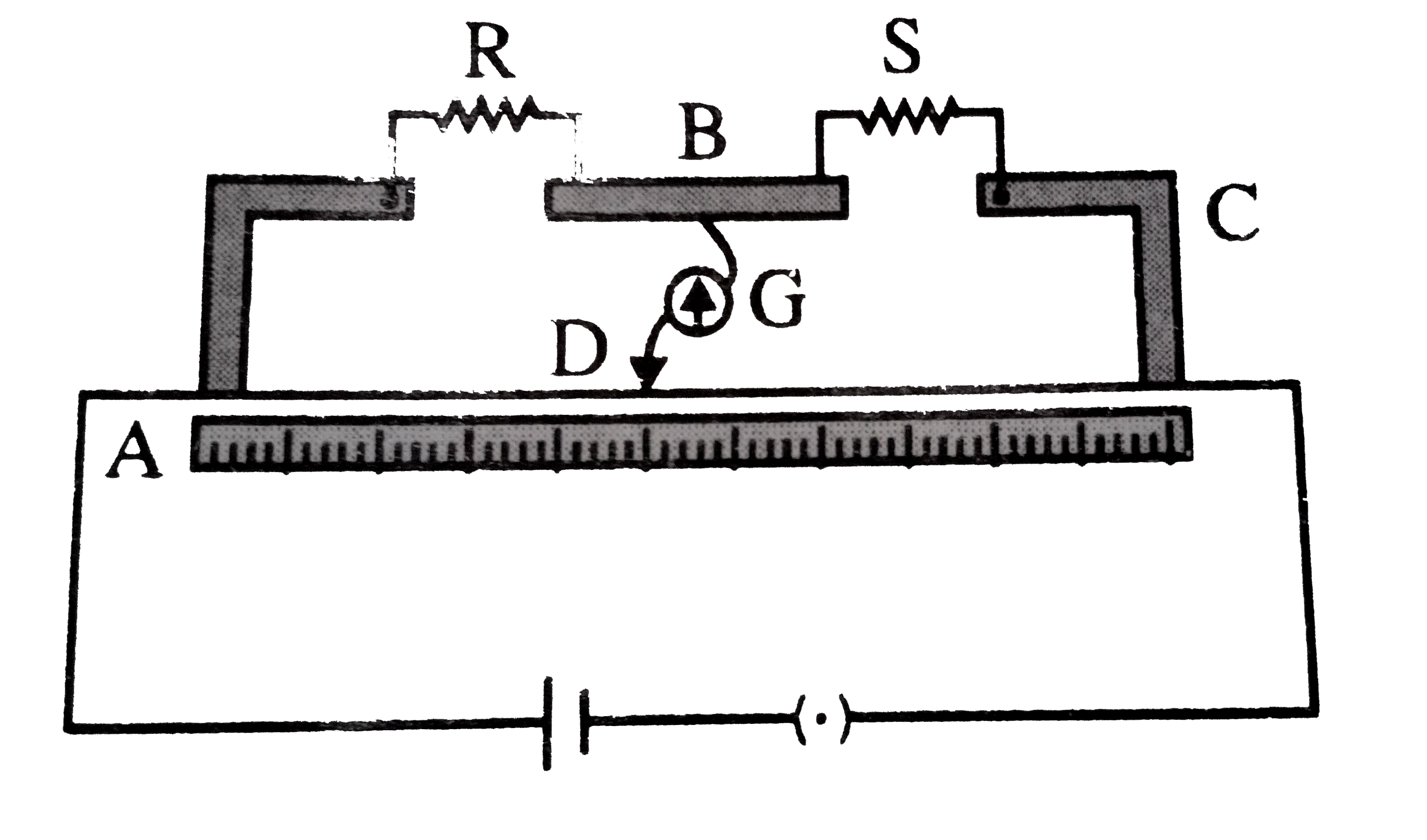
View SolutionIn the experimental set up of meter bridge shown in the figure, the null point is obtained at a distance of 40 cm from A. If a 10Ω resistance is connected in series with R1, the null point shifts by 10 cm. The resistance that should be connected in parallel with (R1+10)Ω such that the null point shifts back to its initial position is :
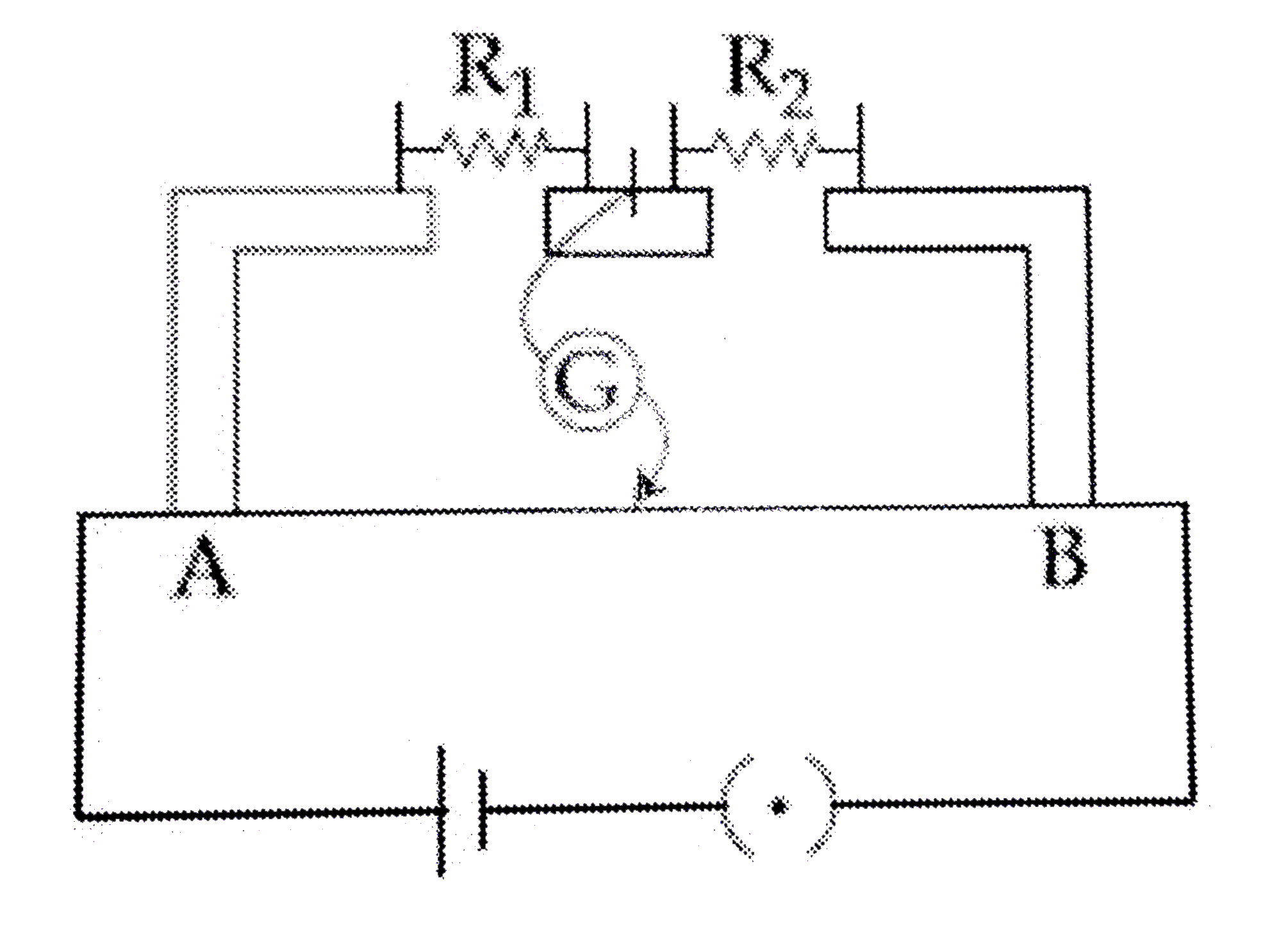
View SolutionTwo unknown resistances X and Y are placed on the left and right gaps of a meter bridge. The null point in the galvanometer is obtained at a distance of 80cm from left. A resistance of 100Ω is now connected in parallel across X. The null point is then found by shifting the sliding contact toward left by 20cm. Calculate X and Y.
View SolutionThe figure shows experimental set up of a meter bridge. When the two unknown resistances X and Y are inserted, the null point D is obtained 40 cm from the end A. When a resistance of 10Ω is connected in series with X, the null point shifts by 10 cm. Find the position of the null point when the 10Ω resistance is instead connected in series with resistance 'Y'. Determine the value of the resistance X and Y
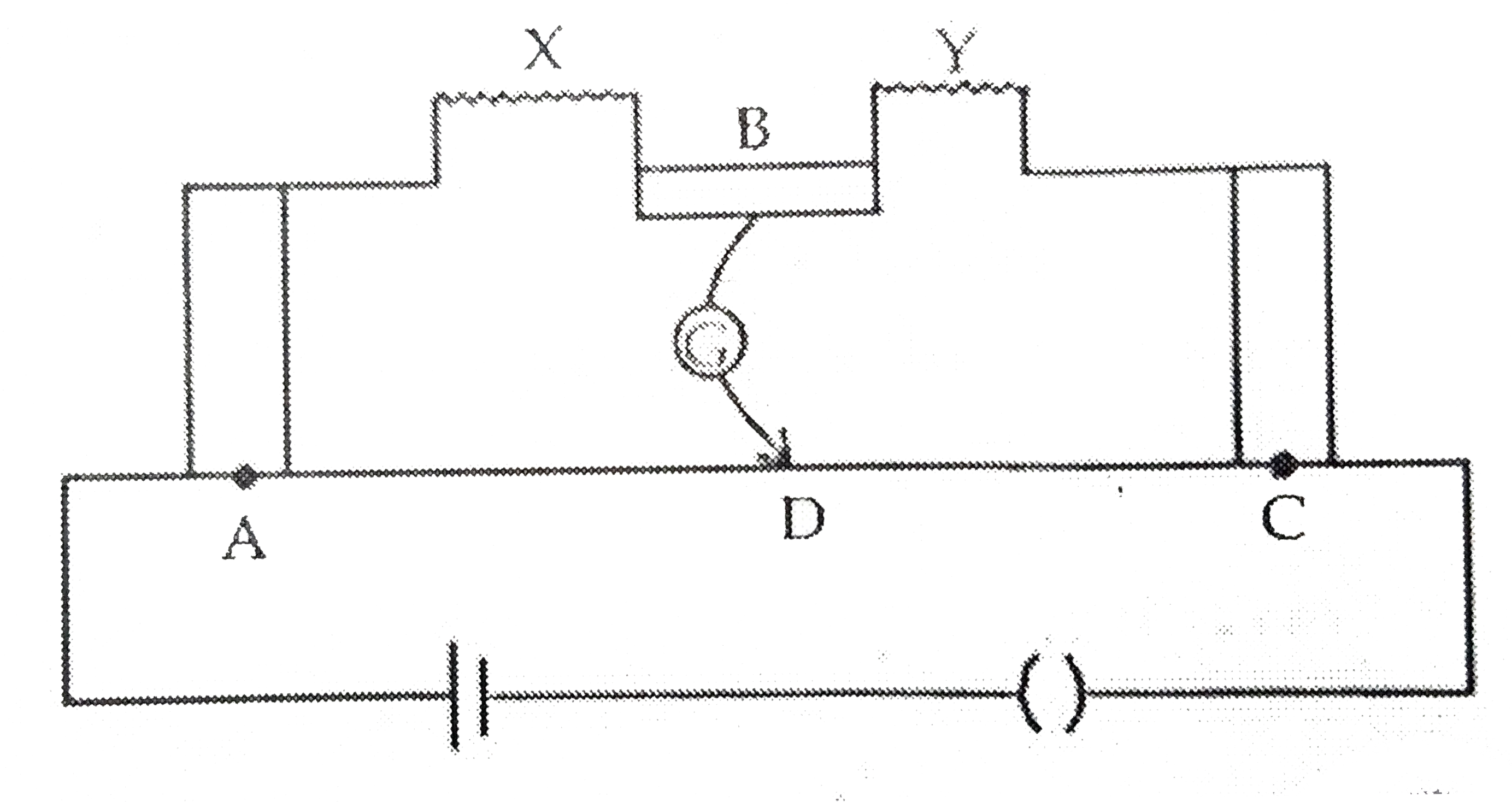
View SolutionIn the meter bridge experimental set up, shown in the figure, the null point 'D' is obtained at a distance of 40 cm from end A of the meter bridge wire. If a resistance of 10Ω is connected in series with R1, null point is obtained at AD=60cm. Calculate the values of R1andR2.
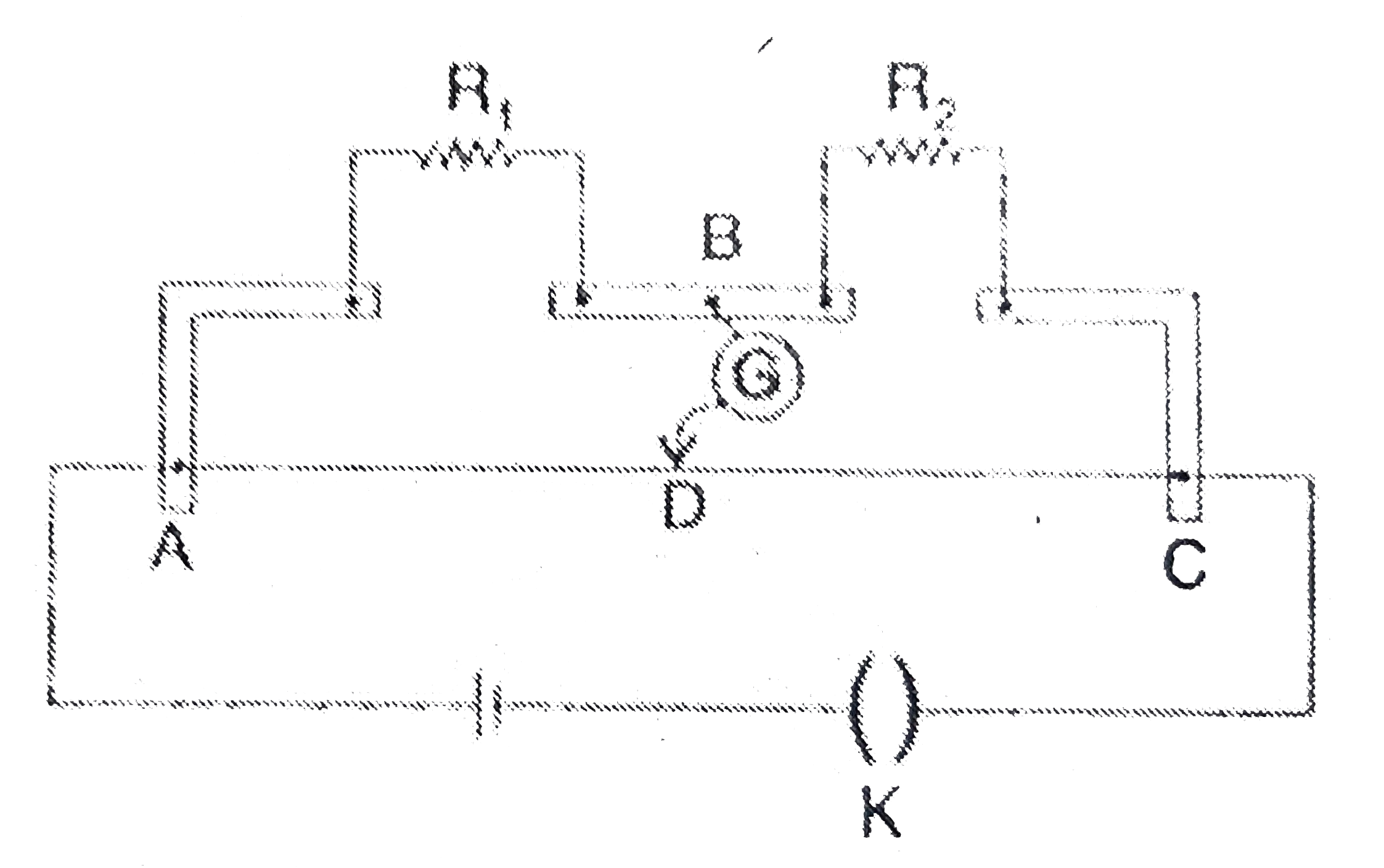
View Solution

